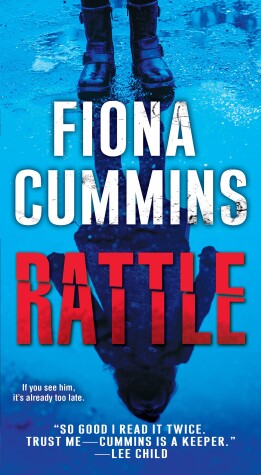I don’t want to give a plot outline because I honestly think that it will detract from the reading experience. But what this book does have is a pretty unique psychopath and a bevvy of damaged characters who are just trying to get through life the best they can. We see the abduction of their children affect two families in very different ways, and best of all, Fiona Cummins has included some interesting details about dealing with Natural History collections and biological specimens. As a former museum curator, I loved reading about that part of her story.
Rattle is full of rich descriptions. There is one passage that I thought was so beautiful I just have to share it:
“Ribbons and sheets of ossified matter. Stalagmites and bridges. Twisted plates and bony nubs... He stands alone in the hallway, and drinks in the glory of the skeleton in its glass case, mesmerised by its distortions, the incursion of bone into thoracic cavity, the calcified trimmings decorating his spine. A young boy trapped in a prison of stone.”
It makes the human body sound like a work of art. I’d heard of Fibrodysplasia ossificans progressive before under its more commonly used name, ‘Stone Man Syndrome’ but I didn’t know a lot about it. Rattle managed to give it a human face as I realised how difficult it must be not just for the sufferer, but for the families who have to see their children become trapped in their own bodies. The Frith family were strong, but damaged, and had very real reactions to the reality of living with a sick child. The Frith’s grew as characters as the novel progressed, and I was impressed with the reality of their emotions and the way Fiona Cummins wrote them in a way that ensures empathy rather than pity.
DS Etta Fitzroy was an interesting character herself, although not entirely original. Every crime novel these days needs a disgraced detective with a tragic backstory, so she seemed more like an archetype than a real, fleshed out character. She also made stupid mistakes unbecoming of a detective that felt contrived to bring a bit more tension to the narrative rather than for any reason that made sense to the story. It was moments like these that brought the quality of Rattle down for me.
For me, my biggest disappointment with Rattle was its lack of any real resolution. I’m not sure if Fiona Cummins was setting it up for a sequel or to become a series, but because of this, the whole novel felt somehow, unfinished. Instead of making me want to desperately pick up the next book when it’s written, it made the preceding parts of the story feel somewhat lacking. I just needed more from it. I needed more explanation, more detail, more motivation and more resolution. The ending betrayed what had, up to that point, been a stellar novel.
All in all, Rattle was a gripping, enjoyable read. But if you’re looking for something groundbreaking that will reinvent the genre, then you’ll have to keep looking. While the villain was interesting and unique, the plot, in general, was on crime thriller rails. If you’re a fan of the genre, you’ll know where it’s going. But at least you’ll enjoy the journey.
Read this review and more at I Blame Wizards.
